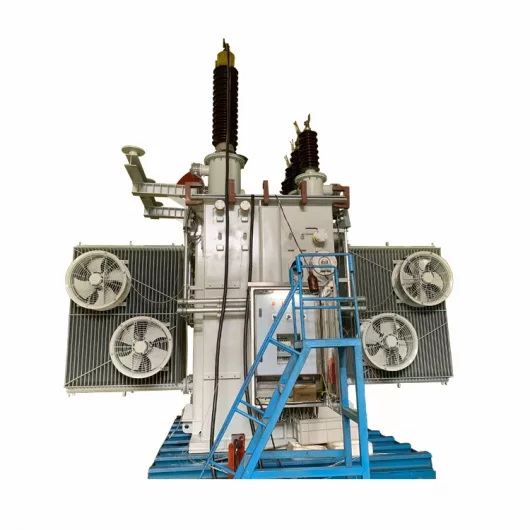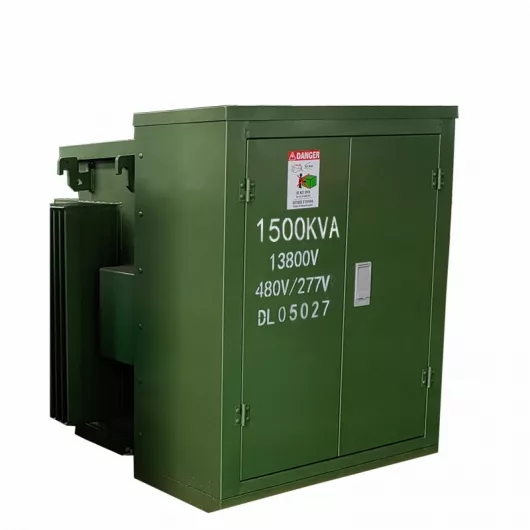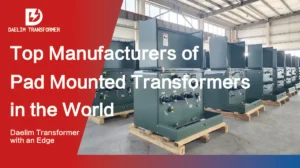
How to Choose Pad Mounted Transformer?
Table of Contents Selecting the right pad-mounted transformer requires careful consideration of several critical factors, as these ground-mounted distribution transformers play a vital role
ELECTRIC, WITH AN EDGE
Changing the performance of distribution transformers and reducing voltage loss indicators are of great significance to improving system reliability and power system energy saving.
Low-loss distribution transformers can greatly reduce losses, greatly reduce the power loss of the grid, and have relatively low cost, small size and light weight. Therefore, there will be a very wide range of applications in the process of power grid transformation. The operation, structure and selection of S11 series distribution transformer windings are comprehensively discussed.
The transformer circuit in the power system is mainly divided into windings, high-voltage leads and low-voltage leads.
Among them, the winding is the main component of the transformer’s electricity, which plays an important role in transformer conversion and power transmission and distribution.
The wire must meet the following requirements: good electrical conductivity, sufficient heat resistance of the insulating paint layer, and a certain degree of corrosion resistance.
The layered winding is shaped like a cylinder and is made by continuous firing. The following mainly introduces the basic composition and application range of several common cylinder sets:
The advantages of layered windings are simple winding and good process performance, but they have the characteristics of poor stability of the end support. Due to the large inter-layer capacitance, the low capacitance to ground, and the uniform voltage distribution, the multilayer winding has slight vibration. Therefore, it has good impact performance against lightning impact.” But considering the problem of poor axial stability, the use of this equipment is greatly restricted.
The structures of several commonly used parallel windings are as follows:
The structure of parallel winding is mainly divided into continuous type, inner shielded type, spiral type, interleaved type and S-shaped type:
In the market, a parallel winding machine is widely used and widely used. This machine has the characteristics of good heat dissipation performance. It is mainly composed of tangled windings and inner shielded windings. It can increase the longitudinal capacitance of the windings at the same time. Changing and distributing the impulse voltage of the winding, good impulse performance.
The conductive materials used in oil-immersed transformer windings are mainly copper and aluminum. Because aluminum winding transformers have poor mechanical strength, large load loss, and high welding quality requirements, the current market mainly uses copper as the conductor material of the transformer.
Winding insulation is mainly insulation between turns, layers, parallels, end rings, and insulated downlights. The front sound constitutes the longitudinal insulation of the winding, and the rear sound constitutes the main insulation of the winding. Insulating materials have the problem of aging when the working temperature is high. In order to prevent similar situations, high heat-resistant paper-clad copper-style wires are used to wind. “In order to meet the requirements of S11 series oil-immersed transformers, aromatic polyamides are used. Insulating paper, polyamide insulating paper has good electrical and mechanical properties, moisture resistance and high temperature resistance, which can fully meet the requirements of the S11 series.





Table of Contents Selecting the right pad-mounted transformer requires careful consideration of several critical factors, as these ground-mounted distribution transformers play a vital role

The primary function of the pad mounted transformer is to serve as a critical distribution transformer that steps down higher primary voltage from utility distribution

A pad mounted transformer operates through electromagnetic induction, serving as a crucial distribution component that converts high voltage electricity to lower, usable voltages for residential

When looking for the best pad-mounted transformer manufacturer, it’s important to find industry leaders known for reliability and innovative solutions. Pad-mounted transformers are essential in
After filling in the contact information, you can download the PDF.